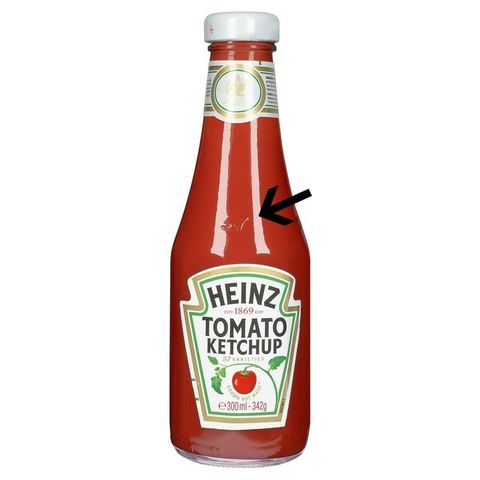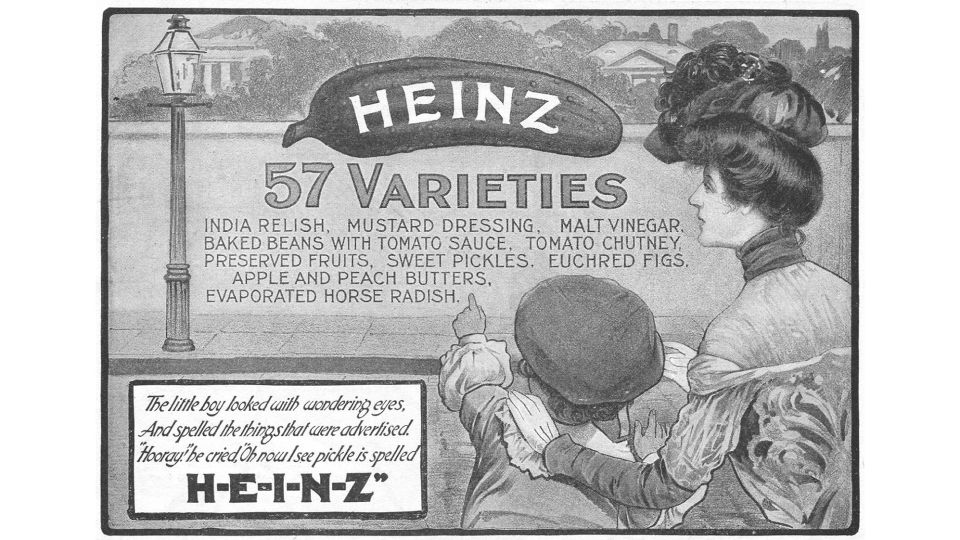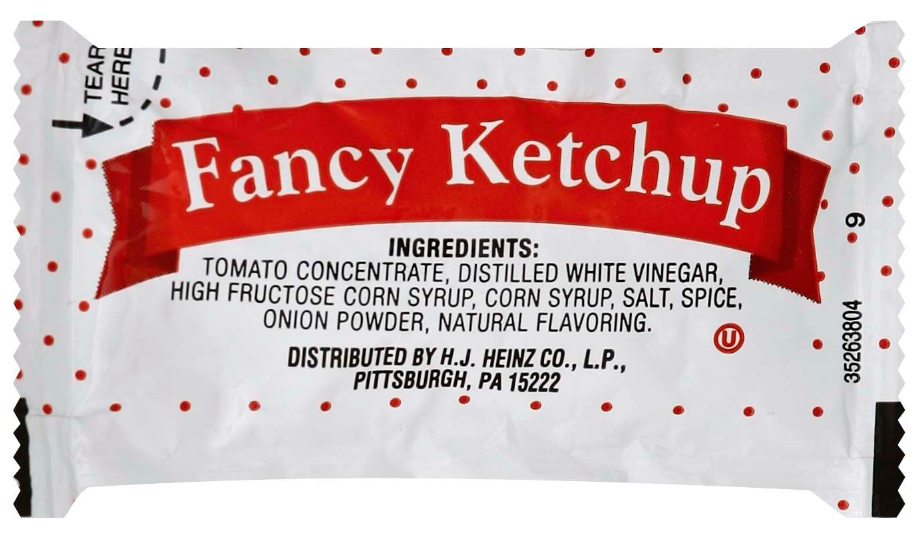The Tiny Lie in Your Pantry

If you’re home right now, go to your pantry and take a quick inventory of what you see. (If you’re not, a mental inventory is also fine.) There’s probably some breakfast cereals, dry rice or pasta, maybe some granola bars or other snacks, perhaps some dried beans, and probably a good amount of condiments that haven’t been opened yet. If there’s a bottle of ketchup in there, take it out. If it’s a bottle of Heinz, you’ll probably find the number “57” somewhere on it. If not, you can use the image above. That number is short for “Heinz 57 varieties,” the number of products made by the H.J. Heinz company when they introduced the slogan back in 1896.
Except for one problem: the number is a lie.
The Heinz Noble Company was founded by Henry J. Heinz and some family members in 1869 in Pittsburgh, Pennsylvania. After some early financial woes and even bankruptcy, the company finally found a winning product — tomato ketchup. In 1888, Henry Heinz bought out his family members and renamed the business the H.J. Heinz Company after himself. And as you could imagine, Mr. Heinz exerted a significant amount of control over the business throughout his life.
As much of a marketer as anything else, Mr. Heinz was always on the lookout for ways to sell more ketchup. And in the mid-1890s, Mr. Heinz thought that his ketchup and other products needed a slogan. The Heinz Company, at the time, had a lot of different types of condiments — ketchup and pickles and horseradish and more — but no way to bring them all together under one brand message. As CBS News Pittsburgh reports, that changed when Mr. Heinz took a trip to New York City, where “he saw an ad for 21 styles of shoes.” Per CBS News Pittsburgh, “Heinz wrote in his journal that the ad was memorable,” and therefore, the Heinz Company just needed to talk about the numerous varieties of foods in their ads. In 1896, Heinz adopted the slogan “Heinz 57 varieties” in their marketing, a message that you can see in the ad below from 1902.

You’ll see some of the varities listed there, but if you count, you’ll see only ten. So what are the other 47? Well, there arent’ 47 others, and there never were. As Taste of Home notes, “Heinz was producing over 60 different products (including ketchup, of course!) at the time the number 57 slogan launched and was added to the bottle in 1896.”
The true origins of the “57” are lost to history, but we have some good theories. The company provided its official take to CNN in 2022, saying that Mr. Hienz “felt there was something ‘mystical, magical, and memorable’ about the number 57, which was a combination of five, his lucky number, and seven, his wife’s lucky number.” (Heinz’s wife died in 1894, two years before the “57” was born.) But CNN also found another explanation. In 1951, Mr. Heinz’s personal secretary wrote a biography of his former boss, and stated that the number seven just resonated:
When Heinz was counting up the number of varieties the company sold in 1896, the number seven jumped out at him.
“Seven, seven —there are so many illustrations of the psychological influences of that figure and of its alluring significance to people of all ages and races,” Heinz said, according to the biography. “58 Varieties or 59 Varieties did not appeal at all to me as being equally strong.”
In any event, the Heinz company has kept the number front-and-center over the last century-plus. And at one point, they did actually publish a canonical list of the 57 varieties. In the 1930s, Heinz published a series of cookbooks titled “Heinz Book of Meat Cookery,” with a new edition coming out every year or two. The 1934 edition has the “List of 57 Varieties” on page 102 (a missed opportunity to not put it on page 57, if you ask me). Wikipedia has that list here.
Bonus fact:

In the United States, ketchup is sometimes marketed as “fancy ketchup,” as seen above.. There’s nothing “fancy” about that packet of ketchup, at least not in the usual meaning of the word “fancy.” So what’s that about? The United States Department of Agriculture grades ketchup for its color, thickness, TK, etc., and gives the products an A, B, or C. “Fancy ketchup” is just another term for “grade A” — and that actually may be important. As the Today Show explains, “Grade A ketchup is less likely to slide off your hamburger than a Grade B or C ketchup, which can legally contain more additives and more liquid.”
From the Archives: “Tomato Ketchup” Isn’t Redundant: The bottle above says it is “tomato ketchup.” But aren’t all ketchups tomato-based? Nope.
